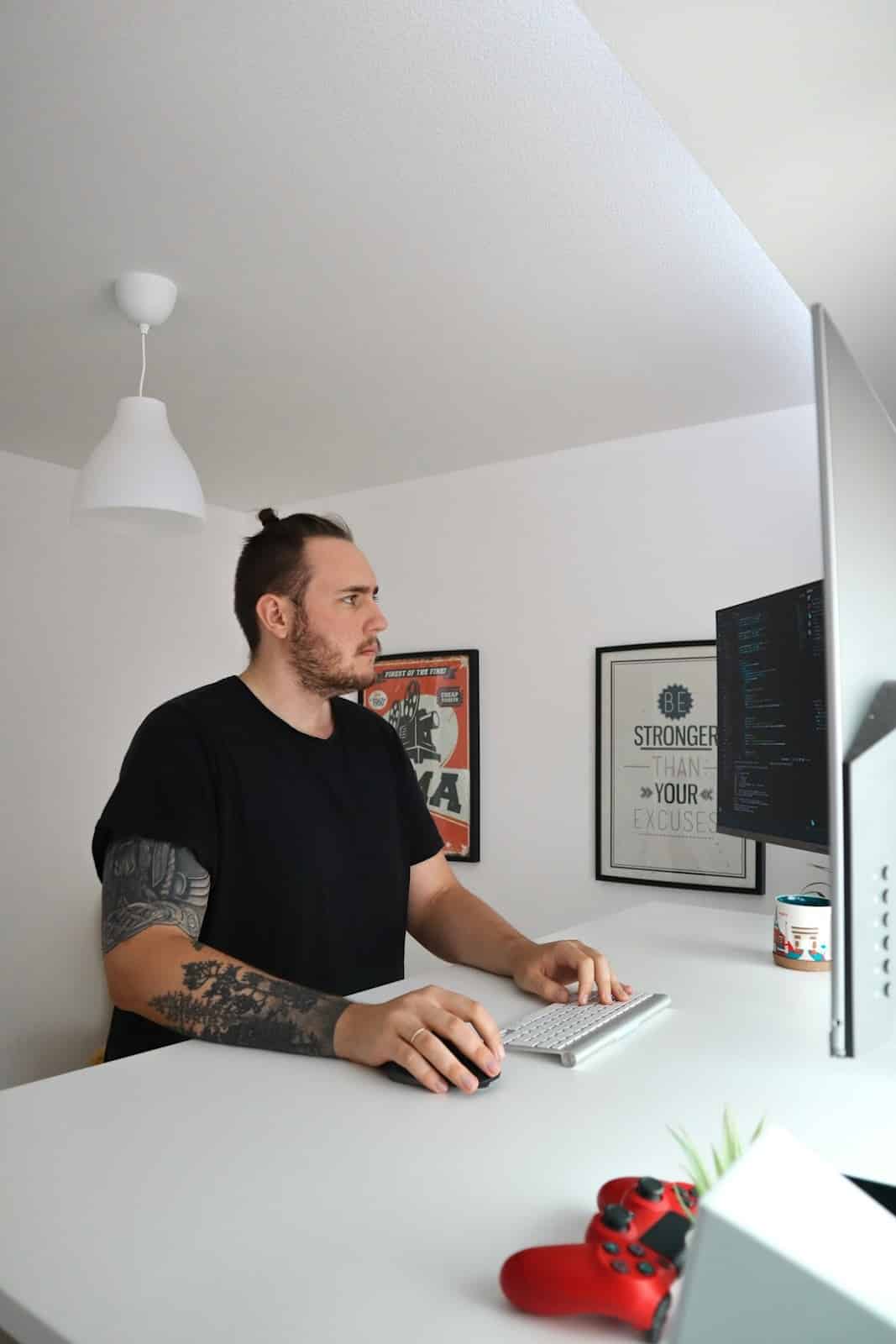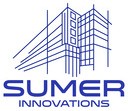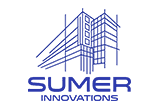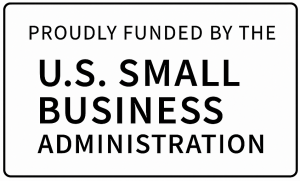The digital revolution has significantly impacted the AEC industry, offering innovative platforms that connect independent professionals with clients and collaborators. These digital marketplaces serve as vital tools for finding design clients online, allowing architects, engineers, and contractors to showcase their expertise and secure projects without geographical limitations.
How to Find Design Clients Online
To effectively harness the potential of digital marketplaces, independent professionals must craft compelling profiles that highlight their unique skills and experiences. Start by emphasizing your ability to integrate sustainable practices and innovative technology into your projects. This showcases your commitment to modern solutions that appeal to environmentally conscious clients. Utilize keywords strategically within your profile and project descriptions, such as “freelance building design” and “remote work trends,” to enhance visibility and attract relevant clients seeking specialized expertise.
Furthermore, consider using high-quality visuals and detailed case studies in your portfolio to provide potential clients with clear evidence of your capabilities. This approach not only builds trust but also differentiates you from competitors who may rely solely on text-based descriptions. Regularly update your portfolio to reflect your latest projects and achievements, ensuring your profile remains dynamic and appealing.
The Role of AEC Networking Platforms
Networking remains a cornerstone of success in the AEC industry. Digital platforms designed for architecture and engineering collaboration facilitate connections with like-minded professionals and potential clients. Engaging with these platforms not only opens doors to new business opportunities but also fosters knowledge sharing and innovation. By participating in discussions and contributing valuable insights, independent professionals can establish themselves as thought leaders within the nationwide AEC community.
In addition, actively participating in online forums and attending virtual events hosted by these platforms can further expand your network. Such engagements allow you to stay informed about the latest industry trends and innovations, keeping you ahead of the curve. Consider joining specialized groups that focus on your areas of expertise, as these can lead to more targeted connections and collaborative opportunities.
Leveraging Online Portfolios and Reviews
An online portfolio is a powerful tool for showcasing your work and attracting potential clients. It should be more than just a collection of images; it should tell a story of your professional journey and highlight your unique approach to design and construction. Use client testimonials and reviews to build credibility and trust. Positive feedback from satisfied clients can significantly influence potential clients’ decision-making process.
Ensure your portfolio is easy to navigate and visually appealing. Use interactive elements, such as 3D models or virtual tours, to engage visitors and provide them with a comprehensive view of your projects. Regularly update your portfolio with your latest work and achievements, and encourage satisfied clients to leave reviews on your platform to enhance your credibility further.
Capitalizing on Remote Work Trends and the Gig Economy

by Revendo (https://unsplash.com/@revendo)
The global shift towards remote work has redefined the traditional workplace, granting independent professionals greater flexibility and access to a broader client base. As gig economy trends continue to rise, self-employed engineers and architects can capitalize on this trend by offering their services to clients across diverse geographic regions.
Strategies for Independent Contractors in a Remote Environment
To thrive in a remote work setting, independent contractors must prioritize effective communication and project management. Utilize digital tools that facilitate seamless collaboration and ensure that all stakeholders are aligned with project goals and timelines. Project management software like Trello or Asana can help keep tasks organized and deadlines clear, while communication platforms like Slack or Microsoft Teams enable real-time discussions and updates.
Additionally, setting clear expectations with clients at the outset of a project is crucial. This includes defining deliverables, timelines, and communication protocols. By establishing a solid foundation, you can prevent misunderstandings and ensure smooth project execution. Building a strong digital presence through a professional website and active social media profiles can also enhance your visibility and attract more clients.
Marketing for the Modern Contractor
In the competitive building market of 2026, contractor marketing strategies must adapt to the digital landscape. Leverage social media platforms and content marketing to showcase your projects and expertise. Sharing success stories, case studies, and thought leadership articles can position you as an authority in the field, attracting construction leads and expanding your client base. Additionally, consider collaborating with other independent professionals to co-create content and reach wider audiences.
Content marketing can be a powerful tool for showcasing your expertise and building your brand. Regularly publishing blog posts or video content on industry trends, challenges, and solutions can help establish you as a thought leader. Engage with your audience by responding to comments and questions, fostering a sense of community around your brand. Explore partnerships with industry influencers or complementary businesses to expand your reach and credibility.
Navigating the Challenges of Remote Work
While remote work offers numerous advantages, it also presents challenges that must be addressed. One common issue is the potential for isolation and disconnection from the industry. To combat this, actively participate in virtual industry events, webinars, and online training sessions. These opportunities not only help you stay connected but also allow you to continue learning and growing professionally.
Moreover, maintaining a healthy work-life balance in a remote setting can be challenging. Set clear boundaries between work and personal life by establishing a dedicated workspace and adhering to a consistent schedule. Regular breaks and time off are essential for preventing burnout and ensuring sustained productivity.
Seizing Building Design Opportunities in 2026
The demand for innovative and sustainable building solutions is at an all-time high. Independent professionals who prioritize eco-friendly designs and cutting-edge technology are well-positioned to seize new opportunities in the building market.
The Sumer Innovations Platform: A Case Study
Sumer Innovations exemplifies how independent professionals can leverage technology to drive construction business growth. This platform connects architecture freelancers, independent engineers, and small architecture firms with clients seeking sustainable and innovative solutions. By utilizing the Sumer Innovations platform, professionals can access a wealth of resources and collaborative opportunities that enhance their ability to deliver impactful projects.
Sumer Innovations also provides tools and resources that support sustainable design practices. By utilizing their platform, professionals can easily access the latest sustainable materials and technologies, ensuring that their projects are not only innovative but also environmentally responsible. This case study highlights the importance of digital platforms in connecting professionals with clients who prioritize sustainability.
The Importance of Engineering and Architecture Collaboration
Successful building projects often require interdisciplinary collaboration. Independent architects and engineers must embrace collaboration to deliver holistic solutions that meet client expectations and community needs. Establishing strong partnerships with professionals from diverse backgrounds enables the integration of varied expertise, resulting in projects that are both innovative and sustainable.
Fostering a culture of collaboration involves open communication and mutual respect among team members. Regular meetings and brainstorming sessions can encourage the exchange of ideas and ensure that all perspectives are considered. Furthermore, leveraging technology like Building Information Modeling (BIM) can facilitate collaboration by providing a unified platform for design and construction teams to work together seamlessly.
Emerging Trends in Sustainable Building Design
Staying ahead of emerging trends in sustainable building design is crucial for independent professionals. This includes understanding new materials and technologies, as well as evolving client preferences. Green building certifications, such as LEED or BREEAM, are becoming increasingly important, and professionals who are knowledgeable in these areas can offer added value to their clients.
Additionally, integrating smart building technologies, such as IoT devices and energy management systems, can enhance the sustainability of your projects. These technologies not only improve building efficiency but also offer clients greater control over their energy usage and environmental impact. By staying informed about these trends, independent professionals can continue to provide cutting-edge solutions that meet the demands of the modern building market.
Fostering a Sustainable and Inclusive Future in Construction

by BDS.Photo (https://unsplash.com/@bdsphoto)
As a visionary leader in the construction industry, your commitment to sustainability and social responsibility is crucial for shaping the future of urban spaces. Independent professionals have the power to drive meaningful change by advocating for eco-friendly designs and inclusive practices.
Creating Affordable Solutions for Diverse Communities
Independent professionals must prioritize affordability and accessibility in their projects. By designing eco-friendly urban spaces that cater to diverse communities, you contribute to the well-being of society while maximizing efficiency. Collaborate with stakeholders to align project goals with community needs, ensuring that sustainable solutions are accessible to all.
Consider incorporating community feedback into the design process to create spaces that truly reflect the needs and desires of those who will use them. Hosting community workshops or surveys can provide valuable insights and foster a sense of ownership among residents. By engaging with the community, you can build trust and ensure that your projects have a positive, lasting impact.
The Role of Technology in Advancing Sustainable Practices
Technology plays a pivotal role in advancing sustainable practices within the AEC industry. Embrace innovative tools and software that enhance project efficiency and reduce environmental impact. From energy-efficient design software to sustainable building materials, technology empowers independent professionals to create eco-friendly solutions that resonate with clients and communities alike.
Explore the use of digital twin technology to simulate and optimize building performance before construction begins. This approach can identify potential issues and inefficiencies early in the design process, resulting in more sustainable and cost-effective projects. Additionally, consider using virtual reality (VR) or augmented reality (AR) to present your designs to clients, providing them with a clearer understanding of the final product and its environmental benefits.
Promoting Diversity and Inclusion in the AEC Industry
Diversity and inclusion are essential components of a thriving AEC industry. Independent professionals can promote these values by creating inclusive work environments and championing equal opportunities for all. This includes actively seeking diverse talent and fostering a culture of respect and collaboration.
Consider implementing mentorship programs to support underrepresented groups in the industry. By providing guidance and resources, you can help nurture the next generation of AEC professionals. Additionally, participating in industry initiatives and organizations that promote diversity can further demonstrate your commitment to creating a more inclusive and equitable industry.
Conclusion
In 2026’s competitive building market, independent professionals have unprecedented opportunities to thrive by embracing digital marketplaces, capitalizing on remote work trends, and prioritizing sustainability. By leveraging technology and fostering collaborations, architects, engineers, and contractors can position themselves as leaders in the industry, driving positive change and creating impactful solutions for diverse communities. As you navigate this evolving landscape, remember that your commitment to innovation, sustainability, and inclusivity is key to shaping a brighter future for the construction industry.
The journey of transformation in the AEC industry is not only about adapting to new trends but also about leading the change. With the right strategies and a forward-thinking mindset, independent professionals can make significant contributions to the built environment, ensuring a legacy of sustainability and inclusivity for future generations.




